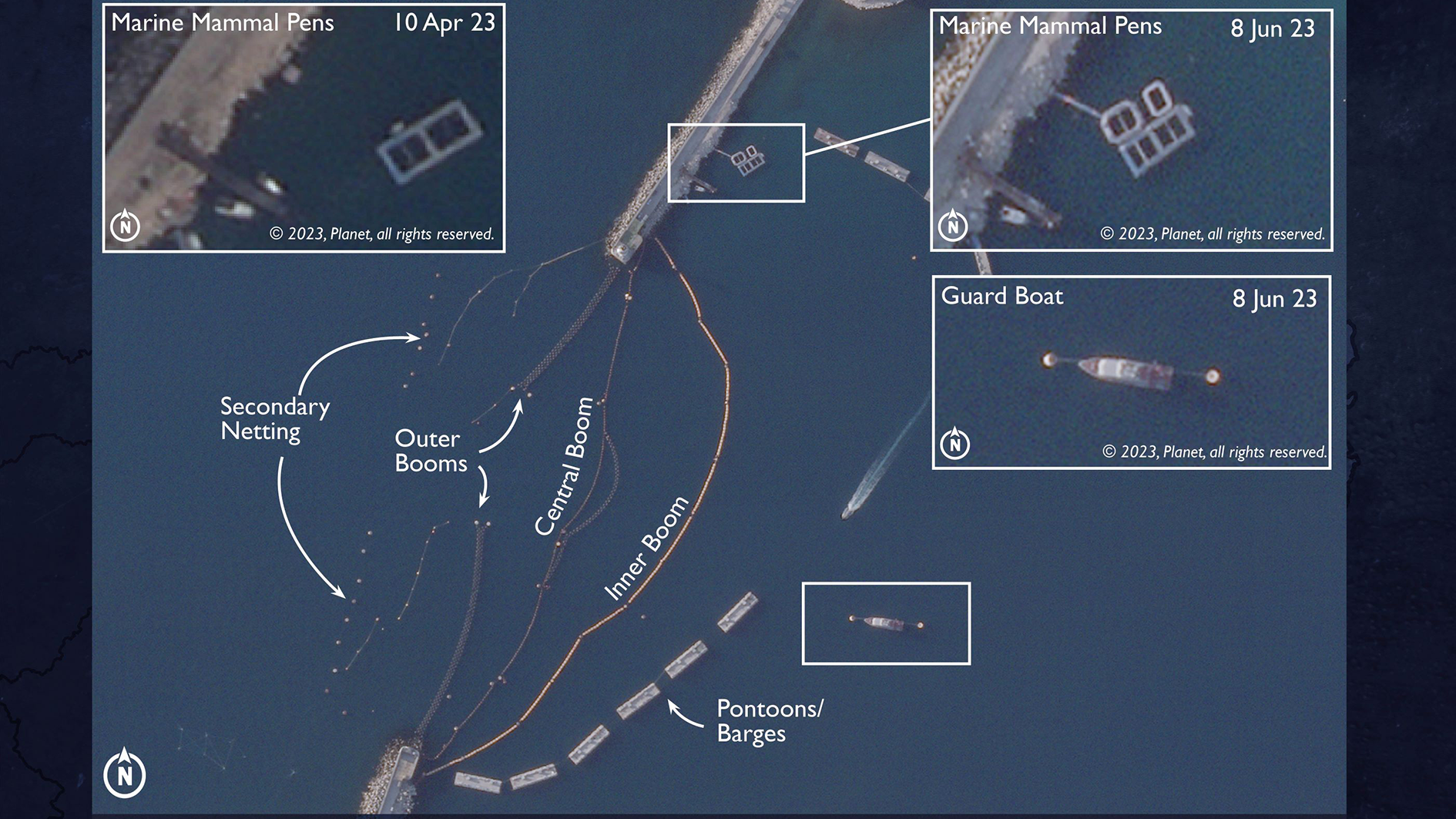
Russia 'highly likely' increasing number of trained dolphins guarding navy base in Crimea

Russia has likely increased the number of dolphins trained to guard its Black Sea Fleet in Crimea, according to a British intelligence report.
The Ministry of Defence (MOD) released images of what it says show a near doubling of floating mammal pens in the Sevastopol harbour which "highly likely" contain bottle-nosed dolphins trained to counter enemy divers.
Sevastopol harbour in Crimea is the main base of Russia's Black Sea Fleet and, since the summer of 2022, the Russian Navy has invested in major enhancements to its security.
According to the MOD: "This includes at least four layers of nets and booms across the harbour entrance.
"In recent weeks, these defences have highly likely also been augmented by an increased number of trained marine mammals."
Russia uses trained animals for a range of missions, and the MOD update also stated that in Arctic waters the Russian navy uses Beluga whales and seals.
Before Russia's invasion, Gervase Phillips, a lecturer in history, politics and philosophy at Manchester Metropolitan University, spoke to Forces News about the role of militarised animals.
"We have nothing like a dog's nose to smell explosives yet and nothing as good at finding things on the seabed as a dolphin or a sea lion," he said.
"There are all kinds of those military roles for which, unfortunately, we have no practical alternative."
The US is also known to use animals for military operations. It has a Mark 7 Marine Mammal System, better known as a bottlenose dolphin, to detect sea mines.
Recent MOD intelligence has also said that the Russian military has been bolstering its defensive lines around Crimea in the last few weeks.









